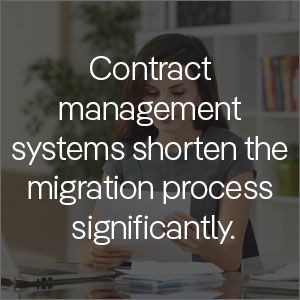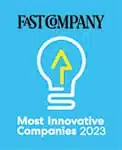Nowadays, contracts are too often seen as inert, static documents. That is instead of living, dynamic documents that are the lifeblood of every business. Their significance seems to end when they are signed and stored away in a filing cabinet – instead of a reliable contract management system.
As a result of this ‘file it and forget it’ mentality, very few companies have full visibility into their contracts and related documents. They lack oversight across existing contractual data and obligations. They lose the ability to leverage contractual language, missing revenue opportunities while having greater exposure to legal, financial, or regulatory risks. Just think about the payment of penalties for lack of compliance with governmental or legal regulations. Think about the failure to draft future contracts with the most favorable terms and clauses.
Accordingly, it is imperative to leverage automation software in the form of a contract lifecycle management (CLM) system of record. That means placing all information into a complete, accurate contractual repository, in which required metadata is easily indexed and searched, for proactive contract management. Such CLM solutions standardize the contracting process and individual contract terms. They deliver varying degrees of process efficiency, expanded control, and improved compliance overall.
However, the systems do not simply address the contracts executed prior to their implementation. They also facilitate the generation, management, and review of all contracts moving forward.
Benefits of Contract Migration With Contract Management Systems
Today, the use of CLM software among legal functions remains low, according to Gartner’s 2019 Legal Department Operations Survey Report. It found that although legal departments have adopted contract management system (CMS), many are only beginning to leverage the technology in their companies. However, whether or not they have invested in a CLM solution, they are keen on meeting broad digitalization efforts within their business. Even legal teams that deployed CLM systems recently are investigating how they can change – or augment – their solutions to meet even newer challenges.
What is coming into sharp focus is that contract management is a vital business function. It needs to be accessible and understandable across an entire organization. That way, opportunities will not be missed, milestones will not be skipped over, and revenues will not be lost, as stated above. As such, it is vital to move contracts and related documents to a CMS that is cloud-based and powered completely by AI.
To onboard legacy documents into client-specific portals successfully, contract abstraction and contract migration need to be executed properly at the outset. The former involves the pertinent dates, clauses, and other information contained in paper documents. This helps companies see the important details of contracts and make informed decisions about signed agreements. Next, contract migration involves the very data that needs to be recovered, migrated, and included in a new contract. This helps companies increase legal compliance and productivity during the entire contract lifecycle.
Contract Abstraction and Migration Best Practices
Naturally, contract abstraction and migration may seem like a huge undertaking. These days, organizations have anywhere between 10,000 and 200,000 active contracts. Sometimes, even more. Each contract contains non-standard terms and obligations. These could pose a debilitating risk and enormous financial implications if they are not identified, tracked, and proactively managed. And the complexity of uncovering every contract – and pinpointing the critical terms within them – requires a robust contract analysis solution.
Although an effective CMS can shorten the migration process significantly, companies still need to understand the contractual data and its context to migrate this information successfully. So, they would do well to partner with an advanced software and services provider. It should offer powerful, user-friendly contract management systems. It should provide personnel who know how to extract contractual documents and the corresponding metadata. More specifically, its team of legal engineers should help you to:
- Abstract important metadata from legacy contract(s), including parties, dates, and key obligations
- Prepare application-specific templates to upload contracts and related documents onto the system, before mapping entries in the templates
- Transfer existing metadata information and files from the legacy system into the application
- Determine contract relationships, attaching supplemental contract records to main records
- Identify supporting documents, like draft versions of agreements and email correspondence files
- Identify and structure amendments so that they are in line with application workflow cycles
A reliable vendor will use these best practices. And you will experience the full benefits of bringing contracts and related documents under better management.
Getting Started with a Contract Lifecycle Management System
As cloud-based, AI-powered CLM software, ContractPodAi supports general counsels (GCS) and legal teams with the management, negotiation, and administration of contracts. With the help of ContractPodAi, existing agreements and extracted metadata can be migrated into the software for future tracking and reporting.
Download our white paper, ‘How to Choose a Contract Management System,’ today. And find out how ContractPodAi can help you become more agile and responsive in your contract-related decisions and actions.
Author:

Kumud Bika
Connect with us on Linkedin
Further Reading:









